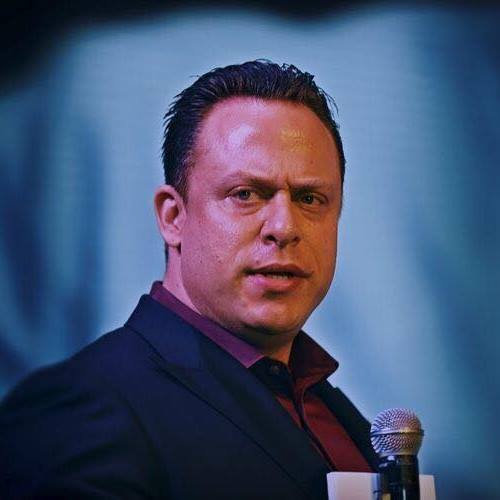
The Four Critical Flaws in the Traditional Approach for High-Value RF/IPL Treatments
In our previous article, we dissected the traditional lead generation model for RF/IPL dry eye treatments, revealing the concerning metrics that plague this approach. With patient acquisition costs ranging from $250-$450 and conversion rates hovering between 10-20%, it's clear that something fundamental isn't working.
But understanding that the traditional approach underperforms is only the first step. To develop a more effective patient acquisition strategy, we need to examine exactly why this model falls short, particularly for high-value, cash-pay treatments like RF/IPL.
After analyzing hundreds of optometry and ophthalmology practices across the country, we've identified four critical flaws in the traditional lead generation approach that are specifically magnified when marketing high-ticket dry eye treatments.
Critical Flaw #1: The Cold Lead Problem - Curiosity Without Commitment
The traditional lead generation model is built on capturing contact information from individuals who express minimal initial interest—typically just clicking an ad and completing a basic form. This creates what we call "cold leads"—prospects characterized by curiosity rather than commitment.
Why This Matters for RF/IPL Treatments
For high-value treatments with significant out-of-pocket costs, casual interest rarely translates to purchasing decisions. Consider the psychology of the typical lead:
They clicked an ad that caught their attention while scrolling social media
They spent 1-2 minutes on a landing page and filled out a form
They invested minimal time and zero money in the process
They have little emotional or psychological investment in following through
This minimal commitment creates several downstream problems:
High No-Show Rates
Cold leads consistently demonstrate high no-show rates for scheduled consultations:
40-60% of scheduled consultations never occur
Each no-show represents wasted preparation time and a missed opportunity to see another patient
Staff time spent on reminder calls and follow-up yields minimal return
Low-Quality Interactions
Even when cold leads do attend consultations, the quality of these interactions tends to be poor:
Many attend "just to learn more" with no serious consideration of treatment
Price sensitivity is extremely high due to lack of perceived value
Objections tend to be fundamental rather than specific
Trust is minimal due to limited prior engagement
Excessive Staff Burden
The cold lead approach creates disproportionate administrative burden:
Multiple follow-up attempts required per lead
High volume of low-quality leads consumes significant staff time
Continuous "chasing" creates staff frustration and burnout
Resource allocation becomes skewed toward lead management rather than patient care
Data Point: Lead Quality Metrics
Our research across practices nationwide reveals concerning metrics about lead quality in traditional RF/IPL marketing:

These metrics demonstrate that the traditional lead generation approach consistently produces lower-quality prospects compared to more commitment-focused methods.
Critical Flaw #2: The Education Deficit - Complex Treatments Require Substantial Explanation
RF/IPL treatments for dry eye represent sophisticated medical interventions addressing a complex condition. Unlike glasses prescriptions or routine exams, patients need substantial education before they can make informed decisions about these treatments.
The Understanding Gap
Before committing to treatment, patients need to comprehend:
The root causes of their dry eye symptoms (meibomian gland dysfunction)
Why conventional treatments (drops, warm compresses) provide only temporary relief
How RF/IPL technology specifically addresses these underlying causes
Why this approach justifies a significant out-of-pocket expense
Traditional lead generation provides minimal opportunity for this education prior to the consultation stage, creating a critical understanding gap.
The One-by-One Inefficiency
In the traditional model, this comprehensive education must occur during individual consultations, creating several problems:
Time Burden on Clinical Staff
The education requirement creates substantial time demands:
20-30 minutes required per prospect for adequate explanation
Same information repeated dozens of times per month
Clinical specialists performing essentially scripted presentations
Highly inefficient use of specialized expertise
Inconsistent Messaging
When education happens individually, message consistency suffers:
Different staff members emphasize different aspects
Varying responses to common questions
Inconsistent handling of objections
Uneven quality of explanation based on staff energy and time constraints
Information Overload for Patients
The consultation format forces compressed education:
Too much information in a single session
Limited time for questions and clarification
Difficult to process complex information while making financial decisions
No opportunity to research or reflect between education and decision
Data Point: Educational Effectiveness
Measuring the educational effectiveness of different patient acquisition approaches reveals significant disparities:

The data clearly demonstrates that individual consultations are fundamentally less effective at educating patients about complex treatments compared to more structured, comprehensive approaches.
Critical Flaw #3: The Trust Barrier - High-Ticket Decisions Require Higher Confidence
High-value, cash-pay medical treatments represent significant financial decisions for most patients. These investments require substantial trust—in the provider, the technology, and the expected outcomes.
Trust Deficit in Traditional Lead Generation
The traditional approach creates minimal opportunity to build trust before the point of decision:
Limited exposure to the provider or practice
No peer validation from other patients
Minimal social proof of effectiveness
Brief interactions before the "sales conversation"
The Impact on Conversion
This trust deficit directly impacts conversion in several ways:
Heightened Price Sensitivity
Without sufficient trust, patients focus disproportionately on price:
Cost objections become primary rather than secondary
Value proposition is harder to establish
Price comparisons to insurance-covered alternatives seem more relevant
Discount requests increase dramatically
Decision Deferral
Lack of trust leads to decision avoidance:
"I need to think about it" becomes the default response
Follow-up conversion rates drop precipitously
Multiple consultations requested before decisions
External validation sought after the consultation
Authority Questioning
Without established trust, clinical expertise is more frequently questioned:
More internet research to "verify" claims
Seeking multiple opinions from other providers
Questioning the necessity of recommended treatment protocols
Skepticism about reported success rates
Data Point: Trust Indicators
Measuring patient trust reveals significant differences between acquisition approaches:

These metrics demonstrate that the traditional lead generation approach consistently creates lower trust levels than approaches designed to establish credibility and confidence before the purchasing decision.
Critical Flaw #4: The Scalability Challenge - Limitations of the One-by-One Consultation Model
The traditional lead generation approach creates a linear relationship between marketing spend and results—to generate more patients, you need more leads, which requires more consultations. This model quickly encounters scalability limitations.
The Consultation Bottleneck
As practices increase their marketing efforts, they eventually hit a consultation capacity ceiling:
Clinical staff can only conduct a finite number of consultations
Increased consultation load reduces treatment capacity
Quality of consultations decreases with volume
Staff burnout increases with repetitive explanations
The Economic Inefficiency Trap
This scalability limitation creates diminishing returns:
Marketing spend increases linearly
Consultation capacity plateaus
Conversion rates often decrease with volume pressure
ROI declines as scale increases
The Operational Friction
Attempting to scale traditional lead generation creates operational challenges:
Scheduling complexity increases
No-show management becomes more burdensome
Staff resources shift from treatment to consultation
Patient experience suffers from rushed interactions
Data Point: Scalability Metrics
Examining the scalability of different acquisition approaches reveals clear performance differences:

These metrics demonstrate that the one-by-one nature of traditional lead generation creates fundamental scalability limitations that cannot be overcome through optimization or increased investment.
Why These Flaws Are Magnified for Cash-Pay Services
While these four critical flaws impact all types of medical marketing, they are particularly problematic for high-value, cash-pay services like RF/IPL dry eye treatments for several reasons:
1. Higher Financial Barriers
Cash-pay treatments with significant costs face greater resistance:
$1,500-$3,000 represents a substantial discretionary expense
Insurance coverage expectations create additional hurdles
Value justification burden is higher than for covered services
Financial decision-making process becomes more rigorous
2. Treatment Complexity
RF/IPL treatments involve more complex considerations than many routine services:
Multi-session protocols requiring ongoing commitment
Technology that is unfamiliar to most patients
Mechanism of action that isn't immediately intuitive
Results that develop gradually rather than immediately
3. Condition Ambiguity
Dry eye presents unique marketing challenges:
Symptoms often attributed to other causes
Self-treatment history creates skepticism about new approaches
Chronic nature creates "learned helplessness" about improvement
Variable symptom presentation complicates marketing messages
4. Competitive Alternatives
High-value treatments compete with numerous alternatives:
Over-the-counter drops and remedies
Prescription medications with insurance coverage
Lower-cost treatment options (warm compresses, lid scrubs)
"Wait and see" approach with no immediate cost
Addressing These Critical Flaws: The Workshop Solution
While traditional lead generation suffers from these four critical flaws when marketing high-value treatments, the workshop approach systematically addresses each limitation:
Solving the Cold Lead Problem
Workshops create commitment filtering:
Registration for a specific event demonstrates higher interest
Time commitment to attend indicates greater motivation
Physical presence represents significant investment
Group setting creates accountability and follow-through
Solving the Education Deficit
Workshops enable comprehensive education:
Structured, consistent presentation of key information
Sufficient time to explain complex concepts thoroughly
Interactive format allowing questions and clarification
Peer learning through others' questions and concerns
Solving the Trust Barrier
Workshops build trust systematically:
Extended exposure to provider expertise
Peer validation from other attendees
Comprehensive explanation builds confidence
Educational approach establishes authority and credibility
Solving the Scalability Challenge
Workshops create exponential efficiency:
Educate 10-20 patients simultaneously
Dramatically reduced clinical time per prospect
Increased conversion eliminates wasted consultations
Batch processing creates operational efficiencies
Your Next Step: Evaluate Your Current Approach
If you're currently using traditional lead generation for your RF/IPL device, examine your process through the lens of these four critical flaws:
Assess your lead quality
What percentage of leads respond to follow-up?
What's your consultation no-show rate?
How many leads are "just researching" versus ready to act?
Evaluate your educational effectiveness
Can patients clearly explain how the treatment works?
Do they understand why it's worth the investment?
Are they confused about key aspects of the treatment?
Measure trust indicators
What percentage make same-day decisions?
How frequently do price objections arise?
How many seek external validation or additional opinions?
Analyze your scalability
How many clinical hours are spent per booked patient?
What's your maximum new patient capacity?
How does staff satisfaction change with increased volume?
These assessments will help you determine whether these critical flaws are limiting your RF/IPL device performance and whether a workshop-based approach might deliver superior results for your practice.
In our next article, we'll explore "The Workshop System: A Different Patient Acquisition Paradigm" in detail, examining exactly how this approach addresses the limitations of traditional lead generation for high-value dry eye treatments.
Garry Regier is the founder of PatientGrowthMachine™, specializing in helping optometrists and ophthalmologists unlock the full ROI of their RF/IPL technology through proven patient workshop systems. To learn if your practice qualifies for our "Until It Pays" guaranteed workshop system, schedule a Launch Strategy Call today.
